As the world of shopping online continues to evolve, software developers working on eCommerce applications need to keep one step ahead of the competition and anticipate upcoming trends. The e-commerce industry is always growing and developing, and in the year 2024, it is projected that new innovative strategies and changes in consumer expectations will emerge.
Both the number of clients who have access to mobile phones and the number of business options that are available to entrepreneurs have increased simultaneously since the beginning of the digital transition. According to projections made by Statista, mobile e-commerce sales would have reached $2.2 trillion by the year 2023, reflecting sixty percent of all profits generated by e-commerce worldwide. It is anticipated that by the year 2027, that number will have increased to 62%.
Do you Know? How Much Does VR App Development Cost?
Therefore, what exactly is an indication? In addition to the fact that the present moment is the best time for your business to create an eCommerce application, this article also investigates the potential for increasing both development and revenue in the years to come. We are going to get into the top eight trends in eCommerce app development that you should keep an eye on in 2024 in this post.
Do you know? Augmented Reality Trends of 2024: New Milestones in Immersive Technology
When Should You Use the Latest Trends in Digital E-Commerce?
Keeping up with the latest trends isn’t just a smart move; it’s absolutely necessary for your survival and progress. Let’s take a look at some of the most compelling arguments in favor of embracing 2024’s e-commerce trends.
Distinct From Competitors
The best way to stand out from the competition, draw in customers, and keep them coming back for more is to be the first to market with innovative products and services.
Better serve your customers.
Improve Consumer Experience
Consumers nowadays are tech-savvy and have high expectations for individualized, frictionless experiences. Actually, research shows that 65% of consumers want online stores and companies to change with their tastes.
Increase Reach and Visibility
Emerging platforms and technologies are frequently at the center of new trends. Maintaining a leading position in the e-commerce space will increase your brand’s exposure, popularity, and recognition.
In other words, trends aren’t just temporary trends. On the contrary, they stand for innovations and changes in customer habits that will determine the course of e-commerce in the years to come. As a result, if you want to succeed in the e-commerce sector, remaining educated and actively embracing relevant trends are the keys.
Also Read: Advantages of AR/VR in Manufacturing Industry
Top AR & VR Trends to Transform E-commerce
Are you eager to dive in? Listed here are a few of the most significant upcoming developments in the e-commerce business for the year 2024. I will also give you some ideas on how to incorporate these trends into your own business strategy and explain why they are important.
1. Virtual Showrooms: Transforming the Shopping Experience
Imagine walking into a showroom without leaving your house. That’s what virtual showrooms are all about. They are revolutionizing the shopping experience by allowing you to browse through products in a lifelike virtual environment. This trend is especially beneficial for businesses selling furniture or home decor, where seeing the product in a simulated real-world setting can significantly influence purchase decisions.
Virtual showrooms are not just about visualizing products; they also offer interactive features. You can change the colors, textures, or styles of products with just a click, giving you a highly personalized shopping experience. This level of customization is one of the key eCommerce AR-VR trends that makes online shopping more engaging and user-friendly.
2. Virtual ‘Try-On’: Personalizing the Online Shopping Experience
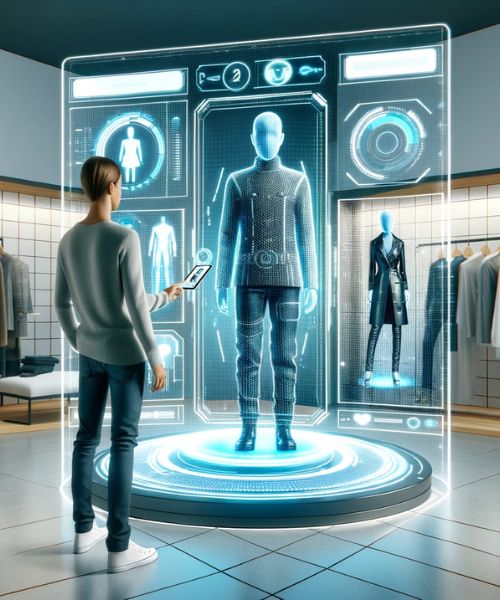
One of the challenges of online shopping is the inability to try products before purchasing. However, AR technology is changing this with virtual ‘Try-On’ features. For instance, you can now see how a pair of glasses looks on your face or how a watch fits your wrist through your smartphone screen. This trend is not only limited to accessories; it’s expanding to clothing, makeup, and even hair color. Virtual ‘Try-On’ is a game-changer, reducing the uncertainty in online shopping and making it more personal and confident.
3. In-Store Navigation: Augmented Assistance for Shoppers
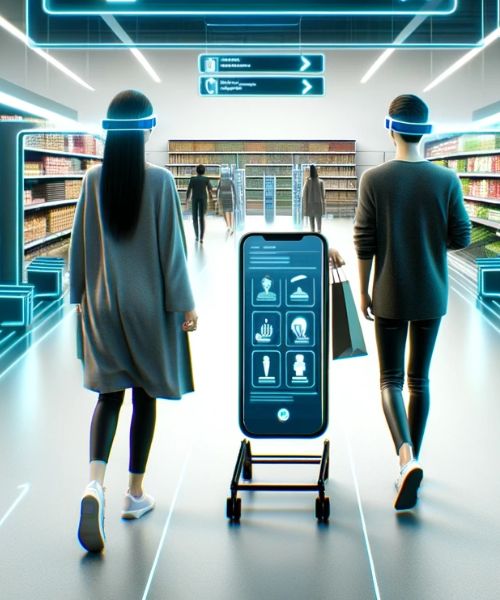

In-store navigation is another emerging trend in the realm of eCommerce AR-VR trends. Augmented Reality (AR) is being used to enhance the physical shopping experience. Imagine walking into a store and your phone guides you directly to the items you’re looking for. This technology can also provide additional information about products, like reviews or other options available, directly overlaid on your smartphone screen. It’s like having a personal assistant with you, making shopping more efficient and enjoyable.
Make your own App! Cost Breakdown for AR App Development
4. AR Filters: Visualizing Products First
AR filters are not just for fun selfies anymore; they are becoming a significant part of the shopping experience. These filters allow customers to visualize products in their own environment. For example, you can see how a new lamp would look in your living room or how a piece of art would fit on your wall. AR filters are making online shopping more interactive and realistic, helping customers make better-informed decisions.
5. VR for In-Store Experience
While AR enhances real-world experiences, Virtual Reality (VR) creates entirely new ones. Some retailers are using VR to create virtual in-store experiences. You can put on a VR headset and walk through a digital store, pick up products, and examine them as if you were physically there. This technology is particularly useful now, as it provides a safe and convenient shopping experience from the comfort of your home.
6. Interactive User Manuals: Simplifying Complex Products
Interactive user manuals are an often overlooked but significant aspect of eCommerce AR-VR trends. These manuals use AR to help customers understand and use complex products. Instead of reading through pages of instructions, you can view a 3D model of the product with step-by-step guides overlaid. It simplifies the learning process, making it easier for customers to use and enjoy their purchases.
7. Enhanced Product Customization Through AR
Augmented Reality is enabling a new level of product customization in eCommerce. Customers can now not only see products in their real environment but also customize them in real-time. For example, when buying a car, customers can change its color, wheels, and interior features using AR, seeing exactly how each option looks. This trend significantly enhances customer satisfaction by providing a more interactive and personalized shopping experience.
8. VR-Enabled Customer Service and Support
Virtual Reality is revolutionizing customer service in eCommerce. Imagine being able to speak with a customer service representative in a virtual space, where they can demonstrate the use of products, solve problems, or provide guidance in real-time. This trend is particularly beneficial for complex products or services, as it adds a personal touch to customer support, making it more effective and engaging.
9. Social Shopping Experiences in Virtual Spaces
Social shopping experiences in virtual spaces are a growing trend, blending social media with eCommerce. Platforms are emerging where users can meet in VR environments to shop together, get advice, and share opinions on products, replicating the social aspect of traditional shopping. This trend leverages the social nature of shopping, creating communities and enhancing the overall shopping experience.
10. AR-Driven Analytics for Enhanced Marketing Strategies
AR technology is not just transforming the customer-facing side of eCommerce but also providing valuable analytics for businesses. By tracking how customers interact with AR features, businesses can gain insights into customer preferences and behaviors. This data can be used to tailor marketing strategies, improve product designs, and create more targeted and effective advertising campaigns.
The integration of AR and VR into eCommerce is not just a fleeting trend; it’s a paradigm shift in how we shop online. These technologies are making online shopping more immersive, personalized, and user-friendly. As we continue into 2024, we can expect these eCommerce AR-VR trends to evolve further, continually enhancing the online shopping experience. With these advancements, the future of eCommerce looks more exciting than ever.
For you gamers! VR Game Development Cost: Is It Worth the Investment?
Potential of eCommerce AR-VR Trends
The potential of eCommerce AR-VR trends is immense. As these technologies become more sophisticated and accessible, we will see a significant shift in consumer behavior and expectations. The lines between online and offline shopping will blur, offering a seamless and integrated shopping experience. The key will be for businesses to adopt and adapt to these technologies, ensuring they stay at the forefront of this digital revolution.
In the coming years, we can expect to see even more innovative uses of AR and VR in eCommerce. These could range from advanced virtual fitting rooms, where AI helps recommend styles and sizes, to fully immersive VR shopping environments that replicate the social aspects of shopping with friends. The possibilities are endless and incredibly exciting.
As we embrace these changes, it’s important for businesses to keep customer experience at the heart of their eCommerce AR-VR strategies. The technology should not just be a gimmick but should genuinely enhance the shopping experience, making it more convenient, enjoyable, and engaging.
Must Read: What is Fintech App Development Cost?
Final Words
E-Commerce AR-VR trends are set to redefine the retail landscape in 2024 and beyond. By blending the digital and physical worlds, these technologies offer unprecedented opportunities to enhance customer engagement and revolutionize the shopping experience. As we look into the future, it’s clear that AR and VR will play a pivotal role in shaping the next era of eCommerce.


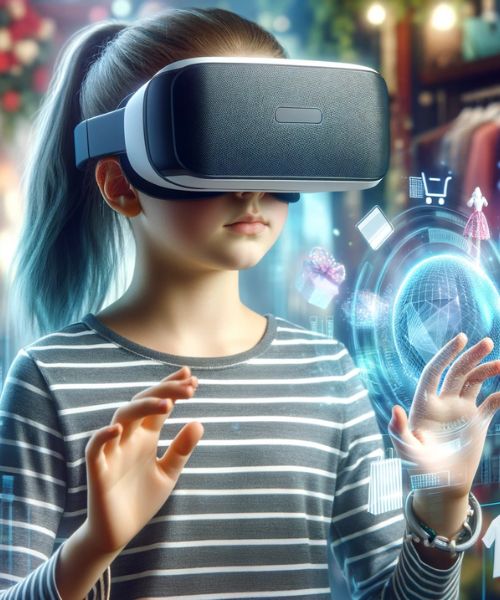
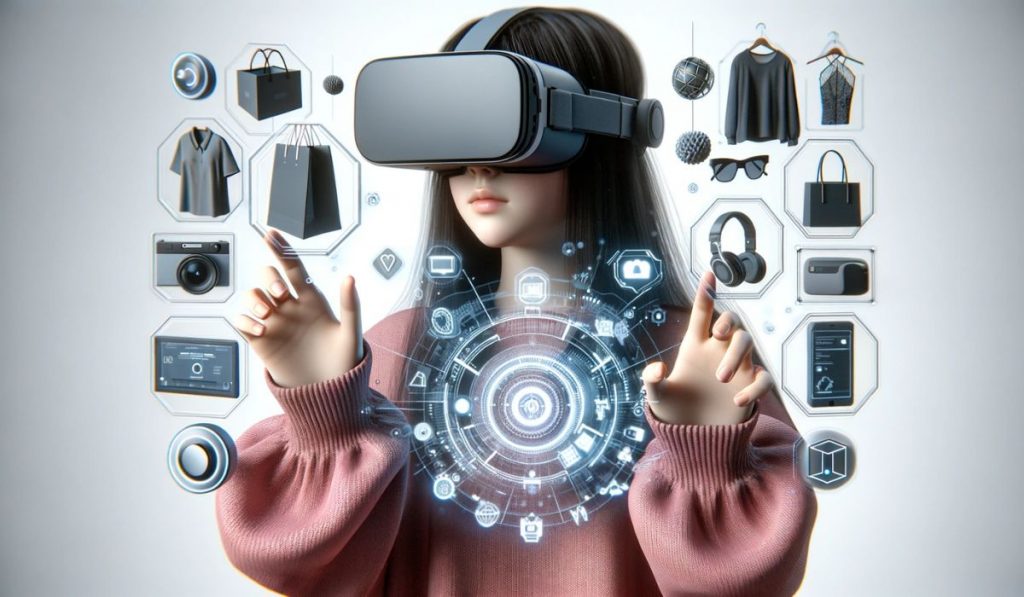
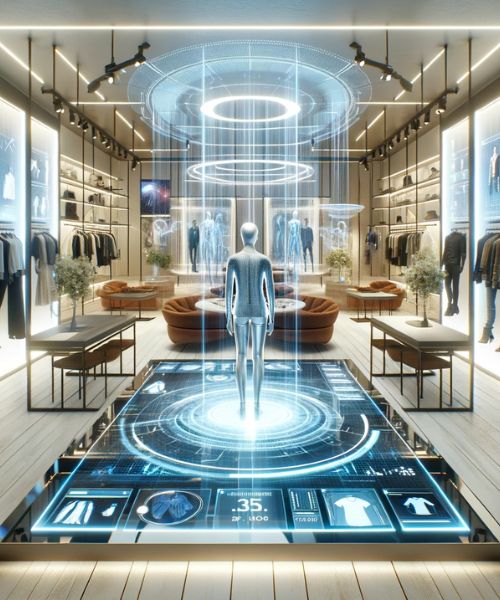
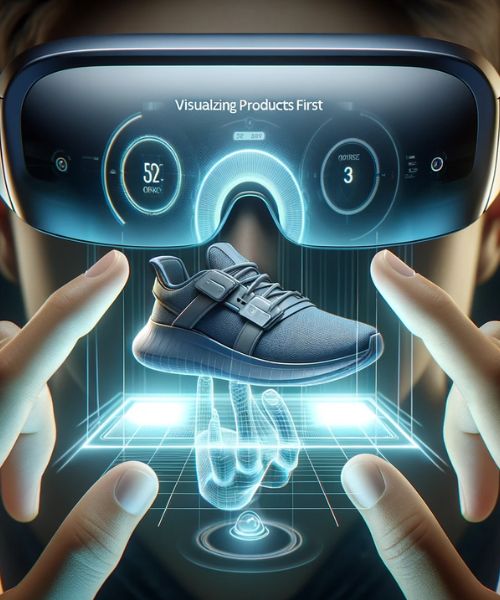

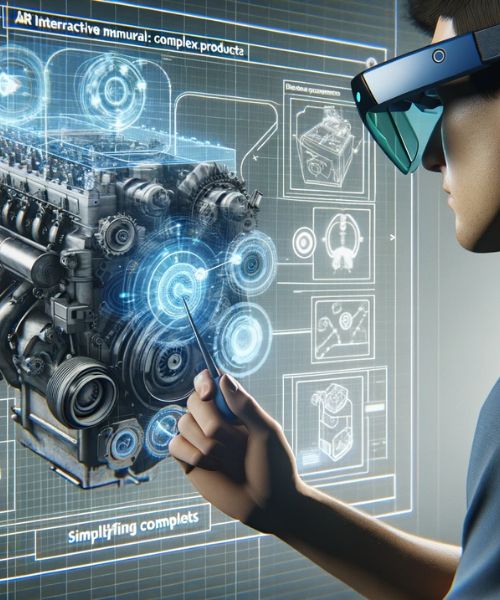


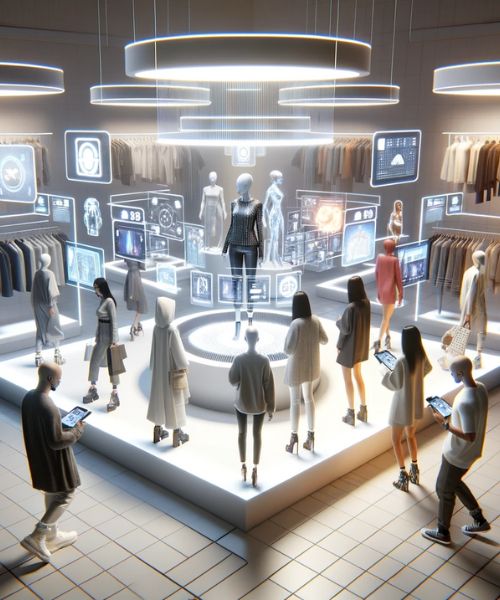



Pingback: How Much Does Pinterest Advertising Cost
Pingback: How Much Does Pinterest Like App Development Cost? 2024
Pingback: Top 10 App Marketing Strategies for a Successful Launch 2024
Afterwest
January 25, 2024 at 4:11 pmI simply could not go away your web site prior to suggesting that I really enjoyed the standard info a person supply on your guests Is going to be back incessantly to investigate crosscheck new posts
Pingback: How Does Augmented Reality (AR) Reshaping the Retail Industry? (Top 10 Examples)
Pingback: The 10+ Best AR Apps for iOS That You Need to Try 2024
Pingback: 10 Best AR Apps for Classrooms Using Apple’s New ARKit